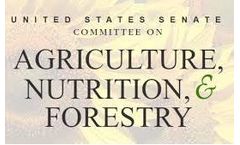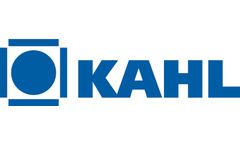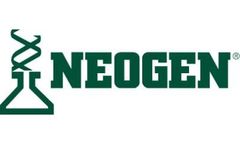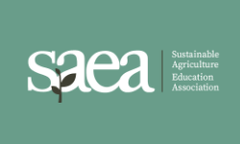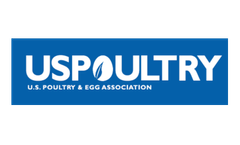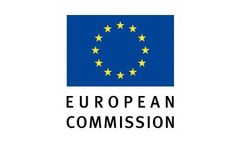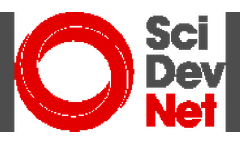Refine by
Breeding Animal Articles & Analysis
18 news found
Protheragen-ING, a leading supplier of pharmaceutical products, has recently announced the launch of a wide range of veterinary products supply to cater to the growing demand for high-quality animal healthcare products. The company's new line of veterinary products includes feed vitamins, active pharmaceutical ingredients (APIs), excipients, amino acids, and minerals, all aimed at promoting the ...
Together, with more than 30 of their network partners, Vytelle is sharing high accuracy bulls that have risen to the top of more than 94,000 animals of 25 different breeds and more than 289,000 RFI EPDs. “Cattle producers need to be able to replicate the right genetics now,” said Kerryann Kocher, Chief Executive Officer for Vytelle. ...
“We urge USDA to reverse this arbitrary decision and make breeding animals eligible for CFAP 2 like they were under the original relief ...
In line with national tradition, the trade fair opened its doors daily from 4 p.m. and offered trade visitors and interested parties the latest developments in mechanical and plant engineering until 10 p.m. The topics "long fibre" and "fish feed" were of particular interest to customers. In the field of "long fibres", KAHL presses have a unique selling point, as depending on the raw material, ...
It almost goes without saying that AMANDUS KAHL was also represented this year with an exhibition stand. In Algeria, KAHL focuses on the pelleting of compound feed and roughage as well as extrusion for the growing fish feed industry. During the four days the 21m² booth was well ...
The Igenity Beef Profile is the leading global genetic testing product that helps producers of both purebred and crossbred beef cattle select their best animals for breeding programs. IGS delivers the most credible, objectively described, user-friendly and science-based genetic predictions to enhance the profitability of beef cattle producers who look to leverage ...
In addition to these top priorities, OFRF recommends research on agricultural biodiversity, GMO impacts and avoidance, livestock health, climate change adaptation, organic breeding of plants and animals, and social science on marketing and policy regarding organic production and transition. ...
Reducing variability by means of genetic selection has been a long-standing desire in animal breeding. For fish farmer, selection for uniformity of body weight or size could lead to increased profit by producing more fish in the size range that is favoured by the consumers. Moreover, from the point of view of animal welfare, uniformity of fish ...
SAPHIR, which stands for “Strengthening Animal Production and Health through Immune Response”, was selected by the European Commission for its Horizon 2020 research programme (and as a proposal to support Sustainable Food Security as part of its Societal Challenges pillar). ...
Technology Foundation STW and the business consortium Breed4Food have launched an ambitious new research programme that links many scientific disciplines with livestock breeding. The aim of the programme – known as the STW-Breed4Food Partnership – is to acquire new insights into sustainability, animal health and welfare and to improve efficiency. STW ...
Researchers are looking for answers to these questions and more using a plant or animal’s obvious traits, called phenotype prediction, a field that will be discussed in a free workshop presented by the University of Florida Forest Genomics Lab, the Forage Breeding and Genomics Lab and Genetics Institute Aug. 11 from 8 a.m. to 1:30 p.m. ...
” Josh Cox, technical service manager with Hubbard LLC, provided a best practice overview of Breed Changes … Effects on Feeding, Lighting and Fertility Programs from a broiler management perspective. ...
For example, it will be possible for Member States to grant aid to compensate for damage caused by protected animals and to purchase breeding animals for the improvement of the genetic quality of the herd. ...
While issues of conservation and halting biodiversity loss in agriculture remain a central element, the report highlights the need for a change of rationale with greater emphasis on an increased sustainable use of our genetic resources such as traditional or endangered breeds of animals or plants. The report is accompanied by a second document, reporting on ...
Genetic resources play a significant and growing role in many economic sectors, including plant and animal breeding, cosmetics and pharmaceuticals. Many of these resources come from biodiversity hotspots in the developing world. ...
This makes N'Dama a valued animal in Africa's endemic regions, although the breed tends to be smaller, produce less milk, and be less docile than its bigger, humped cousins, they said. The scientists used a range of genetic approaches, including analysing differences in genetic activity in the tissues of the two cattle breeds after ...
Before the introduction of genetic engineering man had relied primarily on selective breeding of plants and animals to obtain a desired final product. Advances in science now allow humans to use very precise genetic engineering techniques. ...
The most threatened habitat types are wetlands in general, coastal and marine habitats, standing and running waters, subterranean habitats and dry and humid grasslands. At least nine breeds of indigenous domestic animals have been given the status of an endangered population. ...



